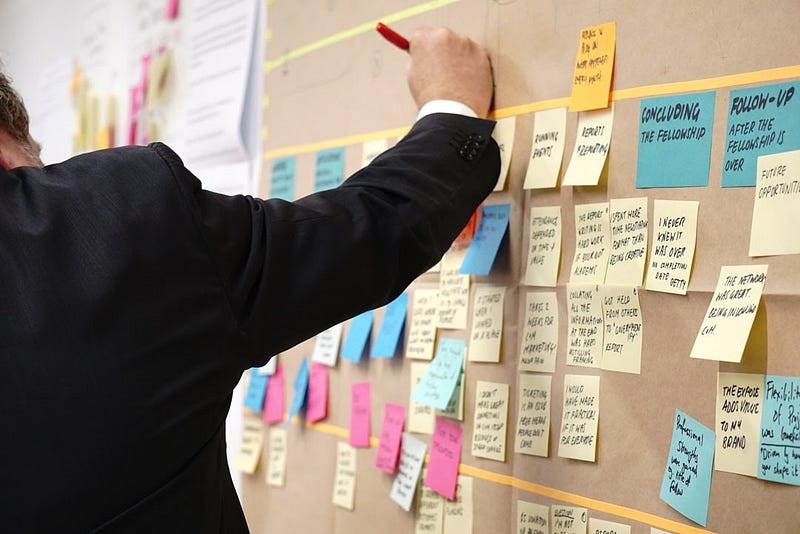
The project management field is ever-expanding, and there are numerous methodologies to choose from. While some may be more popular than others, each has its own benefits and drawbacks that should be considered before choosing the right one.
In this blog post we will discuss the following aspects of project management:
- Seven of the most popular project management methodologies
- What each one entails
- The benefits and drawbacks of each
- Factors to consider when choosing a methodology for your project
The Seven Most Popular Project Management Methodologies
Each of these methodologies has its own unique strengths and weaknesses. It is important for project managers to understand them all to choose the best one for their project.
1. Waterfall Methodology
The Waterfall is the oldest and most traditional project management methodology. It is a sequential process wherein each step must be completed before the next can begin. This traditional approach is most often used in manufacturing or construction projects. Projects that necessitate having a clear end goal in sight.
The waterfall methodology can be helpful when dealing with large, complex projects that require extensive planning. However, this rigid structure can also lead to delays if the plan needs the flexibility to change along the way. This makes it a methodology less suitable for projects with tight deadlines and frequent changes.
2. Agile Methodology
Agile has quickly become one of the most popular project management methodologies in use today. An iterative approach, meaning it is adaptable, allowing for frequent adjustments based on feedback from users. Agile was created to address the shortcomings of Waterfall by allowing for more flexibility and adaptation to change.
Rather than dictating every step of the process upfront, agile makes room for teams to work collaboratively towards short-term goals known as ‘sprints’. This allows for greater flexibility and responsiveness to change, making it well-suited for fast-paced environments or projects with unpredictable requirements.
The Agile method helps teams be more responsive to change. This is especially useful when dealing with complex projects where requirements may frequently change, such as software development projects.
However, there are some disadvantages associated with using Agile. One potential issue is that it can be challenging to track the progress if many project iterations are involved.
Additionally, teams need to work collaboratively and be responsive to changes to make agile successful. This method can sometimes lead to confusion if not implemented correctly and is less suited for larger projects requiring significant planning.
3. Critical Path Method (CPM)
The Critical Path Method (CPM) is a mathematically based planning technique used to optimize the sequencing of tasks to achieve the desired outcome. It is used to calculate the earliest possible time an entire project can be completed. It does this by identifying the longest path of tasks, or “critical path,” that must be achieved to finish the project on time.
This methodology can help managers optimize schedules and allocate resources more efficiently. It is often used in conjunction with programs like Microsoft Excel or Oracle Primavera to help visualize dependencies between tasks.
The advantage of using CPM is that it allows project managers to identify and manage project risks early on in the timeline, ensuring that potential problems do not cause delays down the line. However, CPM can be time-consuming to implement and often requires a fair amount of data analysis.

4. Scrum
Scrum is an agile methodology originally designed for software development projects. It is a very popular methodology and is associated with a lot of literature online on how to use it effectively. Scrum uses daily stand-ups, backlog grooming, and sprint planning meetings to keep teams aligned and productive.
One of the key features of Scrum is its focus on feedback and regular communication. The team meets regularly to discuss how they are doing, what problems they are encountering, and how they can improve their process. This constant feedback loop helps ensure that the project stays on track and that any issues are dealt with quickly.
5. Prince2
Prince2 stands for Projects in Controlled Environments and is the second version of its kind. A popular framework for managing the UK government and private sector projects, it has also been criticized for being bureaucratic and inflexible. However, proponents argue that its rigidity leads to better results than other, more flexible methodologies.
Its framework provides structure and guidance for project managers working in complex environments. Well suited for projects of all sizes, it can be adapted to meet your organization’s specific needs.
6. Kanban
Kanban is a methodology that Toyota created to improve the flow of production. It is now used in many different industries, including software development and marketing.
Kanban relies on a “pull” system rather than a “push” system, which means that work only moves forward when there is a capacity for it. This type of flow ensures that work is not over-burdening workers, and allows for more flexibility as new tasks are easily added.
This methodology’s primary focus is on improving flow and reducing waste. Kanban boards are utilized to track work items and visualize the workflow. A straightforward system that can be implemented in any organization, it has become one of the most popular project management methodologies in recent years.
Some of the key benefits of using Kanban include:
- Increased transparency and communication
- Improved workflow and collaboration
- Reduced cycle time and lead time
- More flexible planning
7. Lean Methodology
The lean methodology is an iterative process that focuses on eliminating waste. Popular in the software development industry, it has been adapted for other industries such as construction and healthcare.
The Lean methodology is based on the philosophy that “less is more.” This means that projects should only include features and tasks essential to meeting the customer’s needs. Anything extra is eliminated, which helps keep costs down and improves efficiency. This methodology is perfect for projects with tight deadlines and limited budgets.
Factors to Consider When Choosing the Suitable Methodology for Your Project
When selecting a project management methodology, it is crucial to consider the following factors:
The Type of Project
The first step in choosing a project management methodology is determining the type of project you are working on. There are many different types of projects, and each has its own specific needs.
For example, if you are working on a construction project, you will need to use a methodology that takes into account the unique intricacies of that industry, such as the Construction Project Management Methodology. However, if you are working on a software development project, you may want to use the Agile methodology.

The Size and Complexity of the Project
The size and complexity of the project are two important factors to consider when choosing a project management methodology. A less formal approach may be more suitable for smaller projects, while larger and more complex projects will likely require a more formal methodology.
The Skills and Experience of the Team Members
The project management methodology you choose should be based on the skills and experience of your team members. Some methodologies may be better suited to teams with specific backgrounds or expertise. For example, if you have a team with a lot of experience in waterfall projects, then the Waterfall method may be the best choice for your next project.
The Organization’s Culture
When selecting a project management methodology, always consider the organization’s culture. The organizational culture will dictate which methodology is most suitable for that specific company. For example, if the organization values compliance and documentation, a waterfall methodology may be better than an agile methodology.
The Timeline for the Project
It is also important to understand the timeline for the project when choosing the right methodology.
Are you starting a brand new project from scratch? If so, you have more flexibility in terms of what methodology you can choose. If you are working on an existing project with a set deadline, you will need to be more mindful of which methodology will work best with your schedule.
For example, some methodologies, like Agile, are better suited for projects with a shorter timeline. If your project has a long timeline, you might want to consider a more structured and sequential methodology, like Waterfall.
Certain projects can be completed relatively quickly and do not require a lot of oversight. In these cases, using a less rigorous method may be the best option.
The Resources Needed for the Project
The project manager should assess the resources needed for the project, including people, money, time, and equipment. Once these are identified, the project manager can begin to look at different methodologies that will work best for the task at hand.
Determine how many resources are needed for the project as some methodologies require more resources than others. For example, the Waterfall methodology often requires a lot of upfront documentation and planning, which can be time-consuming and expensive.
Final Thoughts
In conclusion, there are many different project management methodologies to choose from. The best methodology for a given project depends on the specific needs of that project. While each has its own advantages and disadvantages, the most important thing is to select a methodology that works well for the team and the project.
